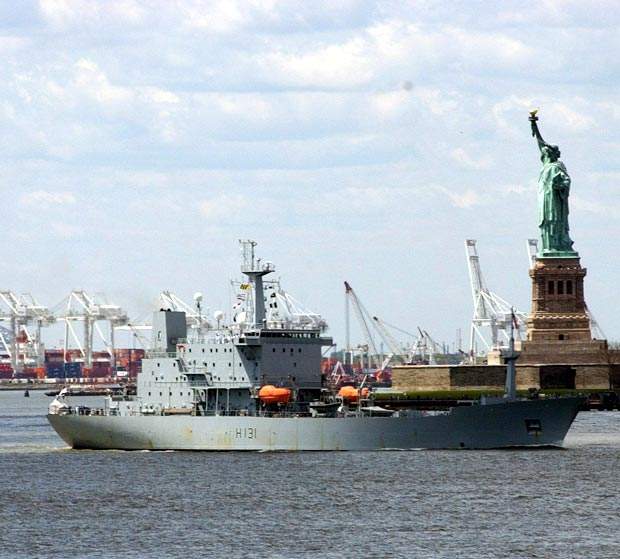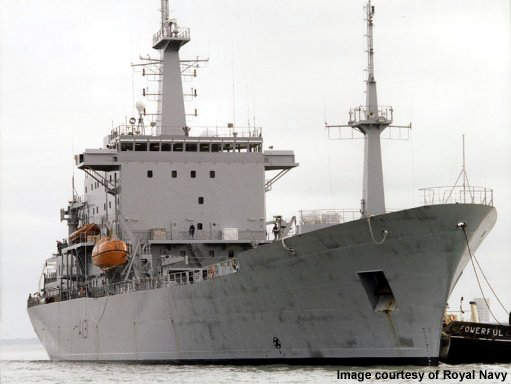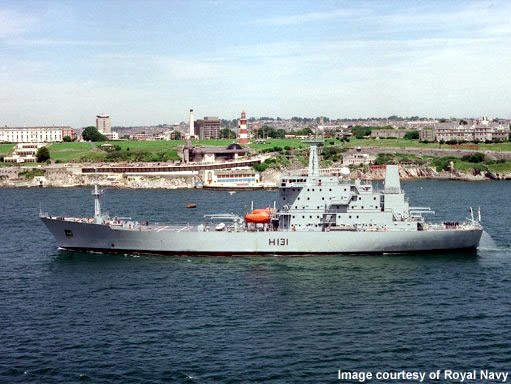HMS Scott, the sole in her class, is the only ocean survey vessel (OSV) serving in the UK Royal Navy. Named after the Antarctic explorer Robert Falcon Scott, the vessel is the largest in the Hydrographic Squadron. The ship has an overall length of 131.1m, a beam of 21.5m and a draught of 8.3m. The displacement of the vessel is 13,500t. It can cruise at a top speed of 17.5kt.
The vessel was built by Appledore Shipbuilders in North Devon. It was ordered in 1995 to replace HMS Hecla (A133). The ship was launched in October 1996 and entered service in June 1997. In February 2005, Scott was deployed to survey the Indian Ocean seabed around the origin point of 2004 earthquake. The survey was conducted in depths of 1,000m to 5,000m by using a high-resolution and multibeam sonar system.
The survey vessel underwent a ten-month refit and sea trials in 2009. In October 2009, it was deployed in the Antarctic and South Atlantic to replace the Royal Navy’s Antarctic ice patrol ship HMS Endurance. The ship is able to be at sea for 300 days in a year.
Design and features
HMS Scott was designed by BAeSEMA. It is equipped with the US Navy-developed integrated ocean survey system. The system consists of four subsystems navigation, sonar, mission control, and processing and power. The survey system is capable of collecting, processing and recording time correlated bathymetric, gravity, magnetic and other oceanographic data. The ship can conduct highly accurate bathymetric surveys with an average speed of 12kt in ocean depths of 50 to 2,500 fathoms in various types of terrain.
The dedicated power system on-board supports other subsystems. The ship’s hull is deep-ballasted with 8,000t of water to provide a stable platform for surveying. Hence it draws more water than an Invincible Class aircraft carrier. The pumping water ballast through connected tanks controls draft and trim of the ship.
Safety surveillance technology protects the machinery and allows the ship to operate with unattended machinery spaces. The ship is also fitted with fixed fire fighting equipment.
Navigation
HMS Scott has an integrated navigation suite to perform surveying operations. The system, along with a sonar array sounding system (SASS) and data processing equipment, produces specialised charts of the ocean floor. The vessel is also equipped with a towed proton magnetometer, gravimeters and Sonar 2090 ocean environment sensor. The ship’s inertial navigation system (MINISINS) has been replaced with the new Kearfott SEANAV ring laser gyro navigator (RLGN) system.
Sonar suite
The vessel is equipped with a modern multibeam sonar suite. The system provides both multibeam and single-beam derived depth data which is time correlated with position information. Depth information is collected over a several-kilometre-wide strip of seabed by the SASS. This feature enables the ship to survey 150km² of ocean floor each hour.
Mission control and processing (MCAP) subsystem
The MCAP subsystem is designed to control and monitor the performance of the overall survey system function. The seabed information is displayed in real-time as 3D images. The quality of the gathered data is monitored by the surveyors. The data is further processed and checked before being transferred to the hydrographic office in Taunton.
Accommodation
HMS Scott has been designed to provide a high standard of living. It can accommodate up to 63 crew members. Each individual is accommodated in one cabin and one bathroom is provided for every two people. Designated communal areas are available for senior and junior officers and two activity rooms are available with sports equipment.
Propulsion
The ship is propelled by two Krupp nine-cylinder diesel engines, which drive controllable pitch propeller through single shaft. In addition, a retractable bow thruster is also provided for slow-speed manoeuvring or station-keeping requirements.






